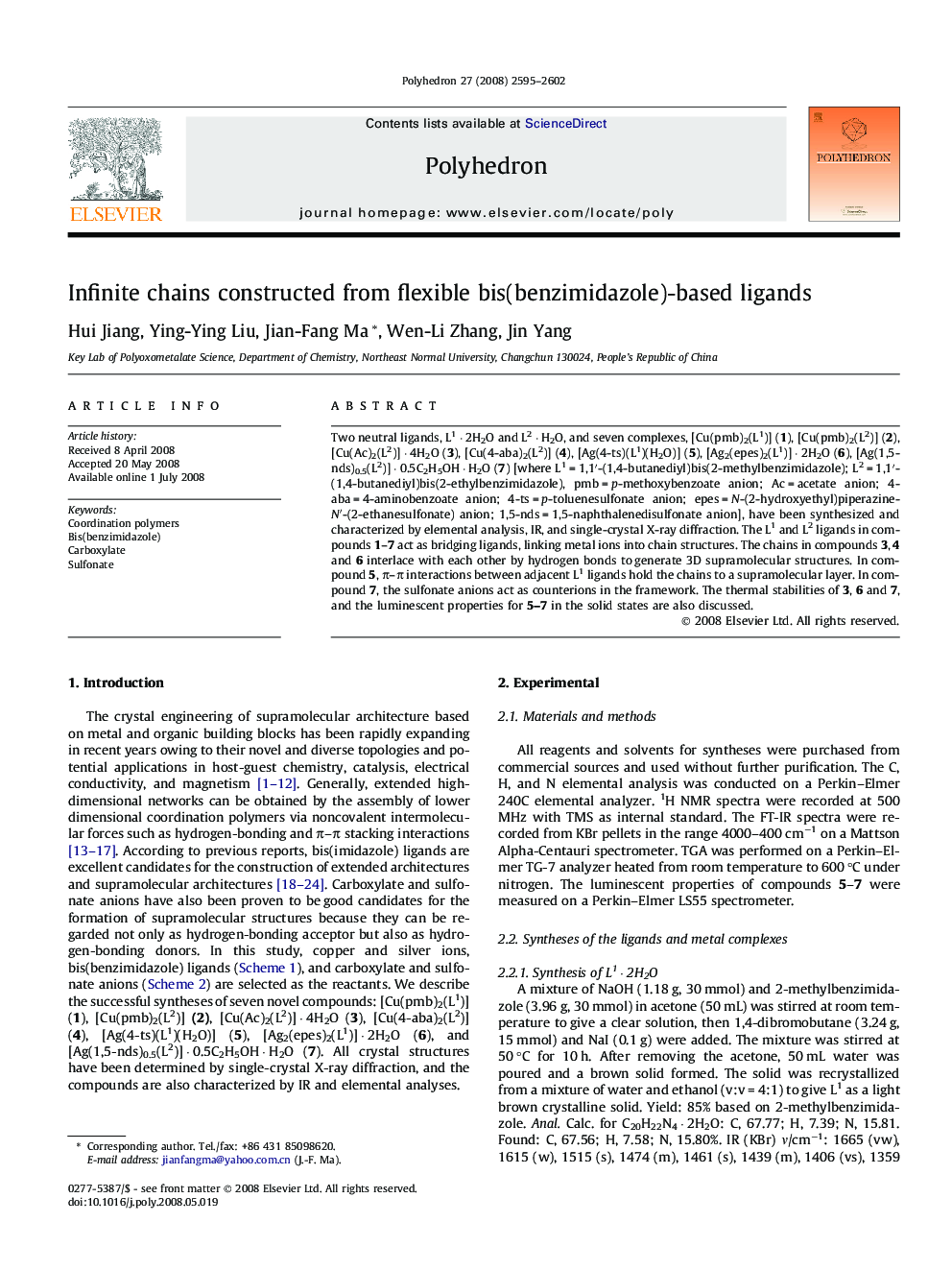| کد مقاله | کد نشریه | سال انتشار | مقاله انگلیسی | نسخه تمام متن |
|---|---|---|---|---|
| 1339260 | 979700 | 2008 | 8 صفحه PDF | دانلود رایگان |

Two neutral ligands, L1 · 2H2O and L2 · H2O, and seven complexes, [Cu(pmb)2(L1)] (1), [Cu(pmb)2(L2)] (2), [Cu(Ac)2(L2)] · 4H2O (3), [Cu(4-aba)2(L2)] (4), [Ag(4-ts)(L1)(H2O)] (5), [Ag2(epes)2(L1)] · 2H2O (6), [Ag(1,5-nds)0.5(L2)] · 0.5C2H5OH · H2O (7) [where L1 = 1,1′-(1,4-butanediyl)bis(2-methylbenzimidazole); L2 = 1,1′-(1,4-butanediyl)bis(2-ethylbenzimidazole), pmb = p-methoxybenzoate anion; Ac = acetate anion; 4-aba = 4-aminobenzoate anion; 4-ts = p-toluenesulfonate anion; epes = N-(2-hydroxyethyl)piperazine-N′-(2-ethanesulfonate) anion; 1,5-nds = 1,5-naphthalenedisulfonate anion], have been synthesized and characterized by elemental analysis, IR, and single-crystal X-ray diffraction. The L1 and L2 ligands in compounds 1–7 act as bridging ligands, linking metal ions into chain structures. The chains in compounds 3, 4 and 6 interlace with each other by hydrogen bonds to generate 3D supramolecular structures. In compound 5, π–π interactions between adjacent L1 ligands hold the chains to a supramolecular layer. In compound 7, the sulfonate anions act as counterions in the framework. The thermal stabilities of 3, 6 and 7, and the luminescent properties for 5–7 in the solid states are also discussed.
The simultaneous use of the carboxylate and sulfonate anions, bis(benzimidazole) ligands to react with copper and silver ions affords seven intriguing frameworks. The results demonstrate that the neutral ligands and the coordination modes of anions may play important roles on the final frameworks.Figure optionsDownload as PowerPoint slide
Journal: Polyhedron - Volume 27, Issue 12, 21 August 2008, Pages 2595–2602